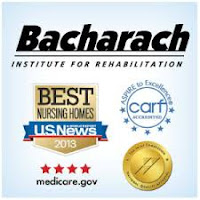Anyway, overcooked string beans provide little, or none, of the beneficial nutrients. And I ate them, too ignorant of nutrients as a child to care. As an adult, I tended not to have vegetables, except those overcooked green beans, always on my shopping list. So I developed Protein S deficiency, unknowingly to put me right in line--eventually--for a stroke. I was not aware of that deficiency for 55 years.
Medscape's Mohammad Muhsin Chisti, MD, says, "Protein S is a vitamin K–dependent anticoagulant protein that was first discovered in Seattle, Washington in 1979 and arbitrarily named after that city. The major function of protein S is as a cofactor to facilitate the action of activated protein C.
"Protein S deficiency may be hereditary or acquired; the latter is usually due to hepatic disease or a vitamin K deficiency. Protein S deficiency usually manifests clinically as venous thromboembolism (VTE)." Stroke, in other words.
"Protein S deficiency may be hereditary or acquired; the latter is usually due to hepatic disease or a vitamin K deficiency. Protein S deficiency usually manifests clinically as venous thromboembolism (VTE)." Stroke, in other words.
The National Institutes for Health (NIH) Joshi and Jaiswal said, "Protein S functions as a cofactor of activated protein C. Its deficiency is a rare condition and can lead to deep vein thrombosis, pulmonary embolism or stroke. Protein S deficiency manifests as an autosomal dominant trait." [Explanation needed: To have an autosomal recessive disorder, you inherit two mutated genes, one from each parent. These disorders are usually passed on by two carriers.]
There's a test for Protein S and C deficiencies, but would you really want to know? A family member who shall remain nameless heard of my research into Protein S and C deficiencies, but he allowed the doctor to talk him out of it like ostrich-head-in-the-sand approach.
On the other hand, if you really know of those S and C deficiencies, wouldn't you change your lifestyle a teeny bit, like eat more vegetables, raw even, and foods high in Vitamin K?
Foods rich in Vitamin K are bearable, some even delicious:
- kale
- collard greens
- spinach
- turnip greens
- Brussels sprouts
- broccoli
- asparagus
- lettuce
- sauerkraut
- soybeans
- edamame
- pickles
- pumpkin
- pine nuts
- blueberries




















